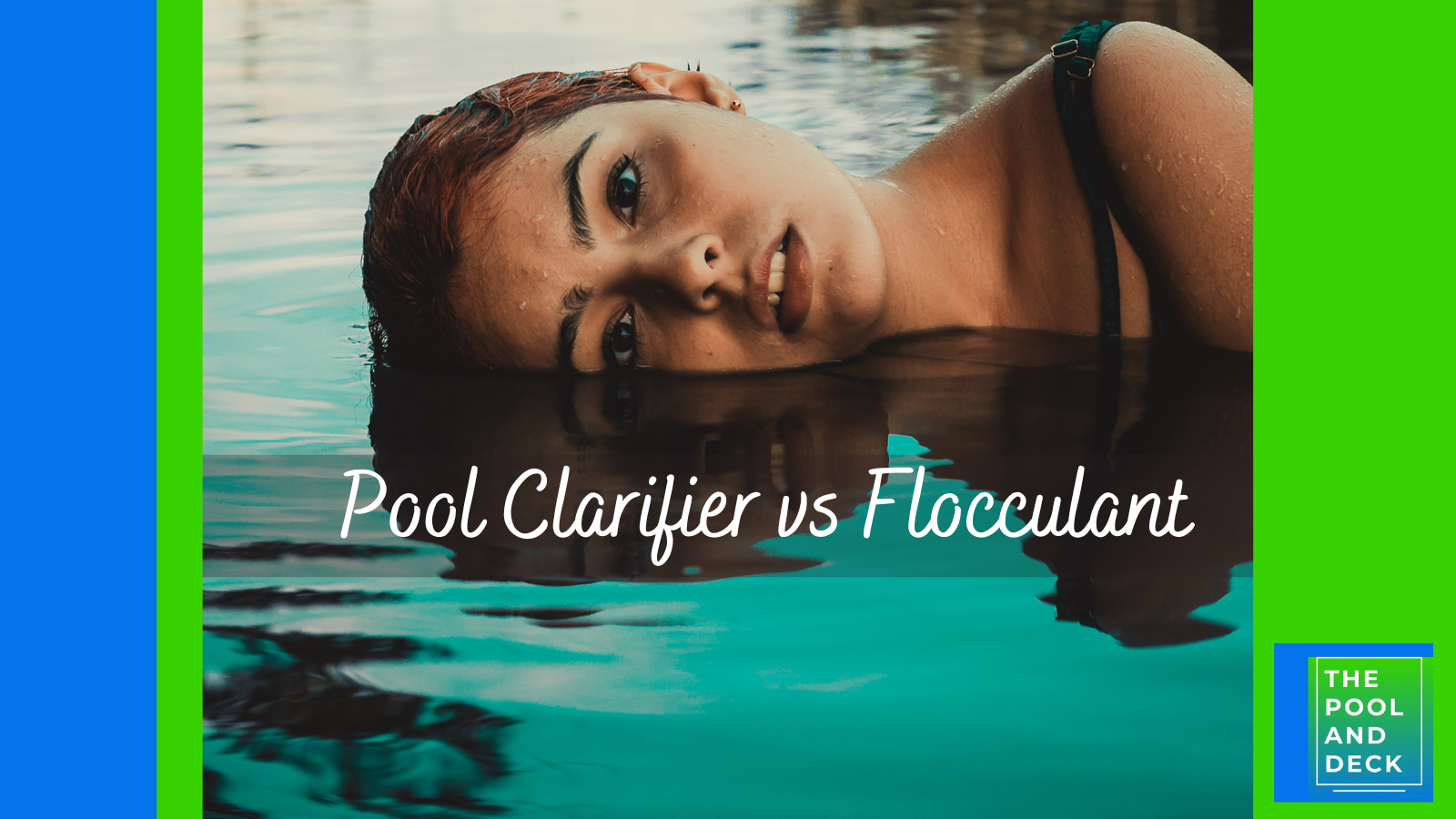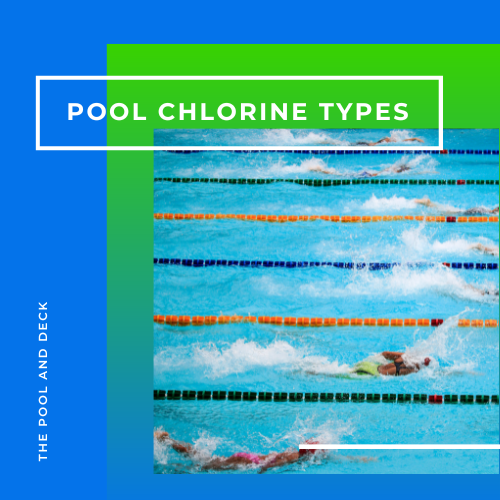Difference Between Shock and Chlorine? (A Super Helpful Guide!)
Table of Contents
What Is the Difference Between Shock and Chlorine?
The key difference between shock and chlorine is the rate at which they chlorinate your pool. Shocking the pool is also known as hyperchlorination. Shock will raise Free Chlorine levels to as much as 30 ppm. Chlorine, on the other hand, maintains a steady level of 2 – 4 ppm.
Quite often shock is termed as chlorine on steroids. This term may give you the impression that shock is just a concentrated form of chlorine. However, it is not just the chlorine concentration that differentiates shock from chlorine. It is the rate at which the chlorination takes place.
To take a specific example, Trichlor tablets have 90% active chlorine but Trichlor is a stabilized chlorine based sanitizer. On the other hand Dichlor granules have only 56% active chlorine but are used as stabilized shock.
Trichlor tablets are formulated to dissolve slowly and therefore maintain the chlorine level in the pool between 2 – 4 ppm. Dichlor granules, on the other hand, disperse quickly once sprinkled on the pool surface and raise the free chlorine level to around 30 ppm within an hour or two.

Some Other Differences Between Shock And Chlorine
In addition to the key difference of rate of chlorination, shock and chlorine have a few other differences as well.
The main ingredient of pool chlorine is always chlorine. The main ingredient of most shocks is also chlorine. However, non-chlorine shocks are also available and may sometimes be preferred, especially in spas and hot tubs.
Non-chlorine shock is a powerful oxidizing agent. It breaks down oils & organics but does not have the ability to kill bacteria or algae.
Chlorine is the primary sanitizer, used on a regular basis in a pool to continuously kill bacteria, viruses, algae and other harmful contaminants. It’s added regularly in small doses to maintain a consistent level of sanitization in the pool.
The free chlorine levels in the pool are high enough to kill pathogens but low enough for you to have a great swimming experience.
Shock on the other hand is added to the pool as and when required or on a weekly basis. Shock is typically used to address specific issues such as algae growth, cloudy water, or an unpleasant odor from chloramine build up.
The best time to add shock is in the evening as the pool can not be used for several hours after that. The free chlorine spikes to a level (typically in the 20 – 30 ppm range) that is unsafe for swimming.
The chlorine gets “spent” neutralizing the microorganisms during the course of the night. The chlorine levels drop to below 5 ppm once the shocking process is completed.
The pool can be used again, of course, after readjusting all other pool chemistry parameters such as pH, alkalinity, etc.
How Are Pool Shock and Chlorine Similar?
It is very normal to get confused between pool shock and chlorine. After all, they have so many similarities.
Both pool shock and chlorine contain the same active ingredient, which is chlorine. The difference is in the formulation.
Regular chlorine used for pool sanitization, either has a lower concentration or dissolves slowly.
On the other hand, pool shock is essentially a highly concentrated form of chlorine, designed to disperse quickly in the pool water.
Both shock and chlorine work by reacting with pool water to form Hypochlorous Acid which kills bacteria, viruses, algae and other harmful contaminants.
Both pool shock and chlorine require careful handling and storage. They should be stored in a cool, dry place, away from direct sunlight and out of reach of children & pets.
Always follow the manufacturer’s instructions when handling and using them to be safe & to avoid accidents.
As an Amazon Associate, I earn from qualifying purchases.
Commonly Used Pool Shock and Chlorine
Shock
Calcium Hypochlorite (Cal Hypo) is the salt of Calcium with Hypochlorous Acid. Cal Hypo Shock is usually sold as a granular powder. Sometimes it is also available as a solution in water. Cal Hypo, for pool use, typically has 65-70% Available Chlorine (AC).
You can use In The Swim Calcium Hypochlorite Chlorine Granular Pool Shock when Cyanuric Acid (CYA) levels in the pool are high. It does not add to the existing CYA level.
Dichlor (Dichloro-S-Triazinetrione) Shock is sold as a granular powder which can be sprinkled on the pool surface. It typically has 56% Available Chlorine (AC).
You can use Rx Clear Stabilized Granular Chlorine, a Dichlor Shock, if the CYA level of your pool is within recommended range. It is easy to use, dissolves quickly and is pH neutral.
Chlorine
Trichlor (Trichloro-S-Triazinetrione) is most commonly sold as 1” or 3” tablets for sanitizing home swimming pools. The tablets can be inserted in the skimmer or in floaters. This is very convenient as you can load the tablets for a week at a time. Trichlor is also the richest source of chlorine as it has 90% available chlorine.
Clorox Pool&Spa XtraBlue 3″ Long Lasting Chlorinating Tablets are easy to use and just perfect for keeping your pool sanitized.
Sodium Hypochlorite (Liquid Chlorine) is the salt of Sodium with Hypochlorous Acid. It is sold as a 10-12.5% solution of Sodium Hypochlorite in water, hence the name Liquid Chlorine.
It is just a stronger version of the household Bleach, which is a 6% solution. You can buy it from pool supply dealers or big box retailers such as Home Depot, Lowes, etc. It can be used for regular pool sanitization in case Cyanuric Acid levels are high.
Bottom Line
Both pool shock and chlorine are your trusted weapons against the harmful pathogens & contaminants in the pool. One can not replace the other. Both are required. Chlorine all the time and shock for dealing with high contaminant build ups.
Here is a summary of the similarities and differences between pool shock and chlorine.
Similarities Between Shock and Chlorine
- Both have chlorine as the main Ingredient
- Both kill microorganisms and break down contaminants
- Both need careful handling and storage
Differences Between Shock and Chlorine
| SHOCK | CHLORINE |
| Raises chlorine levels very quickly | Maintains chlorine levels steadily |
| Used to deal with build up of bacteria, algae, chloramines and other non living contaminants | Used for routine pool maintenance and sustained sanitization |
| Added weekly or as needed | Added continuously or daily |
| Pool can not be used for a few hours after shock | Pool can continue to be used |
Thank you very much for reading the post. I do hope you found it informative and helpful.






